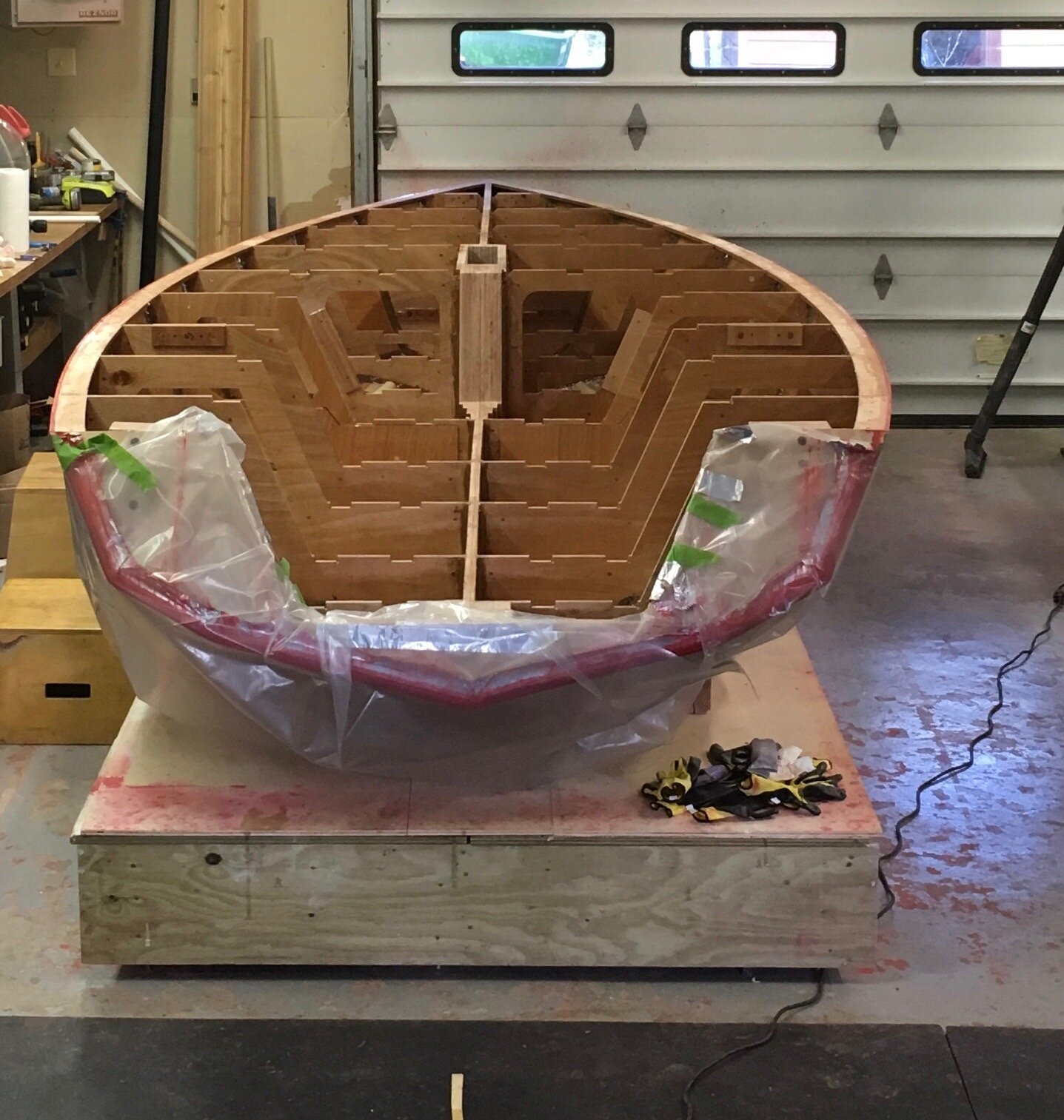What's the Hardest Part of Building a Boat?
The hardest part of building a wooden boat is not actually a part of the boat. The hardest part of building a boat is building the jig on which you build the boat. If you are new to boatbuilding, you’re wondering “what is a jig” and “why is it so hard to build a boat jig?”
In machining generally, a jig is a frame that holds a workpiece in precise alignment for some sort of work — for instance, for drilling precise holes at certain angles or for attaching two pieces at perfect right angles to each other. (more via Wikipedia here). When you are building a wooden boat, the key jig is the skeleton alignment jig; if this jig is not perfect, your boat’s skeleton will be crooked. And, a crooked skeleton will result in a crooked, inefficient hull. So the jig is what makes sure your boat is straight to look at and slippery in the water.
A precision skeleton jig for boatbuilding also saves a huge amount of sanding and fairing time by ensuring the hull is straight before sanding. To put that in perspective, consider this: sanding and fairing time on a typical wooden boat kit account for almost half the hours on the project. So, a good jig produces a better boat with less effort. Why would anyone ever build a boat without using a jig?
Because building a precision jig is hard. For the jig to hold the boat skeleton in perfect alignment in 3-dimensions, the jig itself must be true in 3 dimensions. To put some numbers on that, the Puur SnapTrue jig holds the skeleton in alignment to precision of better than 1mm in every dimension through a volume of 5 meters x 2 meters x .75 meters.
Have you ever tried to build something the size of your bedroom that is perfectly square, plumb, and true in all three dimensions across its entire length, height, and breadth? For professionals with experience and specialized tools, building the jig often takes as much or more time as building each hull on the jig thereafter. There’s very little chance for most hobby-woodworkers to build a true jig in the garage, which is why most kit boats have moved away from using jigs.
Can you build a boat without using a jig? Sure. There are two ways. You could use a mold, which is what production builders use. But, a mold takes even more time and money than a jig.
Or, you could use a construction method called Stitch-and-Glue. Stitch-and-Glue has become very popular in part because it allows hobby boat-builders to start directly on building a hull without building a jig. The i550 is a good example of a modern Stitch-and-Glue design. In Stitch-and-Glue, the builder attaches hull panels directly to each other without an alignment jig — just using zip-ties and blocks and lines and clamps to pull the hull into approximate alignment. Then you spend a lot of time sanding and fairing a Stitch-and-Glue hull to get it closer to a the designed curves. Some beautiful boats are built with Stitch-and-Glue. (you can see some examples here)
But, Stitch-and-Glue is not a method that guarantees a precisely true hull. Stitch-n-Glue relies on lots of trial and error and adjustment, as well as a good amount of sanding and fairing — and it’s never actually right. That’s probably why to my knowledge no professional boat builder uses Stitch-and-Glue construction methods. If you are in a hurry to build a boat, Stitch-and-Glue is a good choice. But, if you are aiming for a professional-quality boat, you will need a precision jig.
About now, you are wondering: if a jig is necessary for building a professional-quality boat, and a quality jig is impossible for an amateur to build, is it possible for an amateur to build a professional-quality boat? Yes!
You can build a professional-quality boat with a Puur sailboat kit, because we produce a precision Puur SnapTrue jig in our factory and ship it to you with your kit. The jig snaps together in perfect alignment, ready in minutes to support your boat skeleton in perfect alignment. The photo on the left below shows a customer’s Puur 17 skeleton standing aligned in the SnapTrue plate jig. The photo on the right below shows the same customer-build after roll-over; note the perfect alignment of the stringer slots over the entire length of the hull — without sanding or shaping. The customer reported that the 2.5 meter long stringers snapped in without any sanding, even though the slots were machined to 1mm tolerances! (you can read more on the unique Puur Method here)
Your Puur 17 hull will be straight, and you will save countless of hours of sanding and fairing, because Puur took the hardest part of building a quality boat and made it a snap. (bad pun, I know) The Puur SnapTrue jig is so revolutionary, we’ve received a patent for it. USPTO # 11,008,079.
With a Puur kit, you can build a professional-quality boat hull without building the precision jig yourself. A Puur kit is how to build a professional-quality boat at home.



